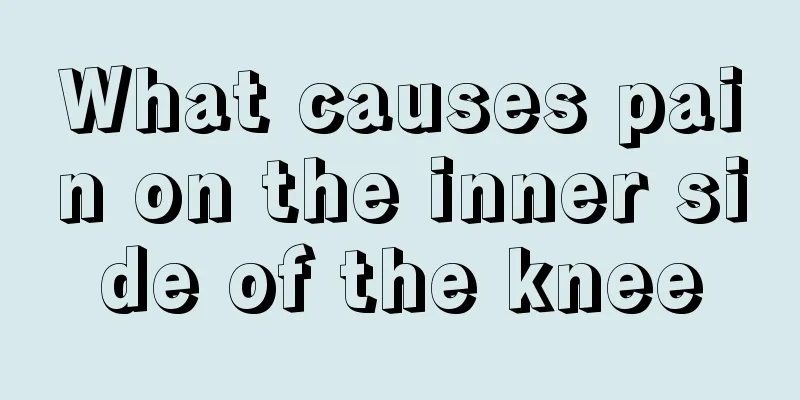What causes pain on the inner side of the knee

|
Many people sometimes feel pain on the inner side of the knee but don’t know what it means. Generally speaking, if the pain on the inner side of the knee is not accidental, it may be caused by some joint injuries, so you must pay attention to rest to avoid worsening of the situation. 1. Meniscus injury Meniscus injury is a common injury among athletes. Cartilage, especially the meniscus, is the most vulnerable part of the human body during exercise. When the lower limbs are weight-bearing, the feet are fixed, and the knee joints are slightly flexed, if the knee is suddenly excessively internally rotated or externally extended (for example, in volleyball, when a player suddenly turns around and dives to save the ball while defending), it may cause a meniscus tear. Meniscus injury will cause an obvious tearing feeling in the knee, followed by joint pain, limited movement, and limping when walking. The joints show swelling and a feeling of slipping, and there is a popping sound when the joints move. 2. Bone hyperplasia Knee osteophyte is a chronic joint disease characterized by degenerative lesions of articular cartilage and adjacent bones, which eventually causes joint pain and stiffness and is one of the important factors affecting health status. Degenerative changes in the knee joint, wear and thinning of the articular cartilage followed by secondary bone hyperplasia, this disease is generally manifested as joint pain, especially when going up and down stairs, the pain is more severe, inability to squat, etc. It is a sterile inflammation, and injections and anti-inflammatory drugs cannot eliminate sterile inflammation. 3. Osteitis of the knee joint This disease is more common in middle-aged and elderly people, mostly women. Excessive weight load is the main cause of disease. Arthritis causes swelling and pain, and sometimes a grinding sound when the joint is moved. The knee may develop a varus deformity with medial pain. 5. Knee ligament injury The stability of the knee joint is relatively poor when it is slightly flexed. If it is suddenly subjected to external force and causes eversion or inversion at this time, it may cause injury to the medial or lateral collateral ligament. Medial collateral ligament injuries account for the vast majority of clinical cases. Taking this injury as an example, the patient will have a clear history of trauma, pain and tenderness on the medial side of the knee, pain that worsens when the calf is passively abducted, swelling on the medial side of the knee, and ecchymosis after a few days. Knee joint movement may be restricted. |
<<: Why does knee pain occur when running? Here are 4 reasons to know
>>: What causes hand joint pain? Here are 3 reasons to know
Recommend
Electric toothbrush black mildew removal
In recent years, electric toothbrushes have becom...
Chest tightness and bone pain
The ribs are very important bones in the human bo...
What essential oil is good
Essential oils are mainly a kind of fragrance ext...
What are the fire prevention and self-rescue methods
Fire is very scary, so you must take precautions ...
Nine manifestations of dehydration
Dark yellow urine and constipation are often cons...
Can advanced lung cancer be cured?
Can advanced lung cancer be cured? 1. The possibi...
What is clove oil
I don’t know if you have heard of clove oil. I be...
What are the methods to remove formaldehyde from a new car?
Buying a new car always makes people excited, but...
What are the hazards of smog weather and preventive measures
Haze weather is a weather condition that has freq...
How to remove oil stains from clothes
Removing oil stains is the most annoying thing fo...
Do I need to straighten the top when doing an inward curl?
In life, many people particularly like the inward...
Is kidney cyst scary?
The kidneys are very important organs. If you tak...
What should lung cancer patients pay attention to in their diet? Lung cancer patients should pay attention to these points in their diet
What should lung cancer patients pay attention to...
How to prevent a cold after being caught in the rain
If you go out without an umbrella and it rains, y...
What are the dangers of ovarian cancer
Nowadays, with the improvement of the quality of ...









